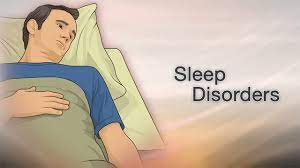5+ Best Sleep Disorder Treatment for Shirf Work And Apnea
5+ Best Sleep Disorder Treatment for Shirf Work and Apnea. What is a sleep disorder and what is the best treatment to get rid of it? In this post, we have covered each and every aspect of sleeping disorder
What is shift work sleep disorder?
Shift work sleep disorder (SWSD) is a sleep disorder that
commonly affects those who work non-traditional hours, outside the typical 9
a.m. to 5 p.m. work day.
Shift work schedules go against most people’s internal body
clocks or circadian rhythms. SWSD causes difficulties adjusting to a different
sleep/wake schedule.
Which results in significant issues with falling asleep,
staying asleep, and sleeping when desired. About 20% of the full-time workforce
in the United States is involved in some form of shift work.
What are the symptoms of shift work sleep disorder?
People who work irregular hours, such as rotating shifts,
graveyard shifts, early morning shifts, or split shifts, may develop shift work sleep disorder (SWSD).
Oversleeping, lack of restorative sleep, and tiredness are
some of the symptoms. Work and play are equally impacted by these problems.
A person's circadian rhythm, or "biological
clock," might be thrown off by an atypical work schedule. In the course of
a 24-hour period.
It modulates alertness and drowsiness. Symptoms of a
misaligned circadian rhythm might include the following:
- · Sleepiness\selectness
- · Hunger and body temperature
A whopping 10% to 40% of night shift employees, according to
the Cleveland Clinic, suffer from SWSD. Those whose schedules are often in flux
are particularly at risk.
But not everyone who works a shift that isn't typical is
affected by SWSD. Many individuals who work these schedules are naturally
"night owls," and they are able to avoid the condition because of
their circadian cycles.
What are the symptoms of shift work sleep disorder?
SWSD is a condition that lasts a long time. Symptoms may
have a significant influence on your daily life. Many of the following symptoms
may be present:
- · Insomnia, both on and off the work, a lack of energy, and difficulties focusing
- · An inability to acquire enough sleep or a lack of a rejuvenating night's rest
- · A state of low spirits
- · Relationship issues
It's not safe to drive or work if you don't get enough sleep
on a regular basis since you're more likely to fall asleep at the wheel or make
a mistake.
Heart health and intestinal health are just a few of the
things it might affect. It may also raise your cancer risk. Women and the
elderly are more likely to suffer from sleep deprivation as a result of this
disorder.
Working when fatigued may lead to serious accidents. The
Chornobyl disaster rested Source, Pennsylvania's nuclear power plant disaster
rested Source in 1979.
And the Exxon spill on the Alaskan coast in 1989 is all
thought to have been caused in part by the use of nuclear power.
The symptoms of SWSD should not be taken lightly, and they
should not be ignored. Accidents may occur on and off the work if it isn't
properly handled.
How is shift work sleep disorder diagnosed?
SWSD diagnosis criteria will be used by your physician. A
variety of tools are available to them, including the most recent version of
the Diagnostic and Statistical Manual of Mental Disorders or the International
Classification of Sleep Disorders.
It is possible that your doctor will ask you a number of
questions regarding your sleeping habits and any sleep disruptions, as well as
the kind of shift you are presently working.
You may be asked to provide a sleep record that spans at
least a week. There is a good chance that you may be quizzed on your medical
history and any current drugs you are taking.
Your doctor may initially rule out illnesses like narcolepsy
and obstructive sleep apnea since SWSD mimics other sleep disorders. In order
to rule out any of these possible sleep problems, they may request a sleep
study.
You'll spend the night in a clinic with monitors on your
finger, chest, or face as part of a sleep study. Monitors such as this will
look at items such as:
·
How well a person sleeps and how many sleep
disruptions they have
·
Breathing and heart rate.
How is shift work sleep disorder treated?
Sleep aids may be necessary for certain people, but
lifestyle modifications are the most crucial. Melatonin is generally believed
to be safe, and some employees report that it has a significant positive impact
on their quality of rest.
It is recommended that hypnotics and sedatives be only taken
sparingly and for a limited duration. Some of the most often recommended
medications are waklert 150 and artvigil 150 these are the products
which you can use to get rid of it.
The U.S. Food and Drug Administration has authorized
modafinil (Provigil) as a wake-promoting medication with a minimal misuse risk.
It has been demonstrated to promote sleep and reduce
post-sleep drowsiness, according to studies. Modafinil has also been
demonstrated to minimize long-term memory impairment and enhance memory
learning in clinical trials Trusted Source.
To get a good night's rest, shut out any noises that can
disturb you. A half-hour before you go to sleep, avoid looking at your phone or
bright displays. Noise-canceling headphones or white noise machines might help
you get some shut-eye.
Living with shift work sleep disorder
In the United States, an increasing number of people work
shifts that aren't standard. Nontraditional work patterns aren't projected to
diminish in the near future.
Given the present workforce and technological advancements. You
may improve the quality of your off-work sleep by altering your habits and/or
using sleep drugs.





Comments
Post a Comment